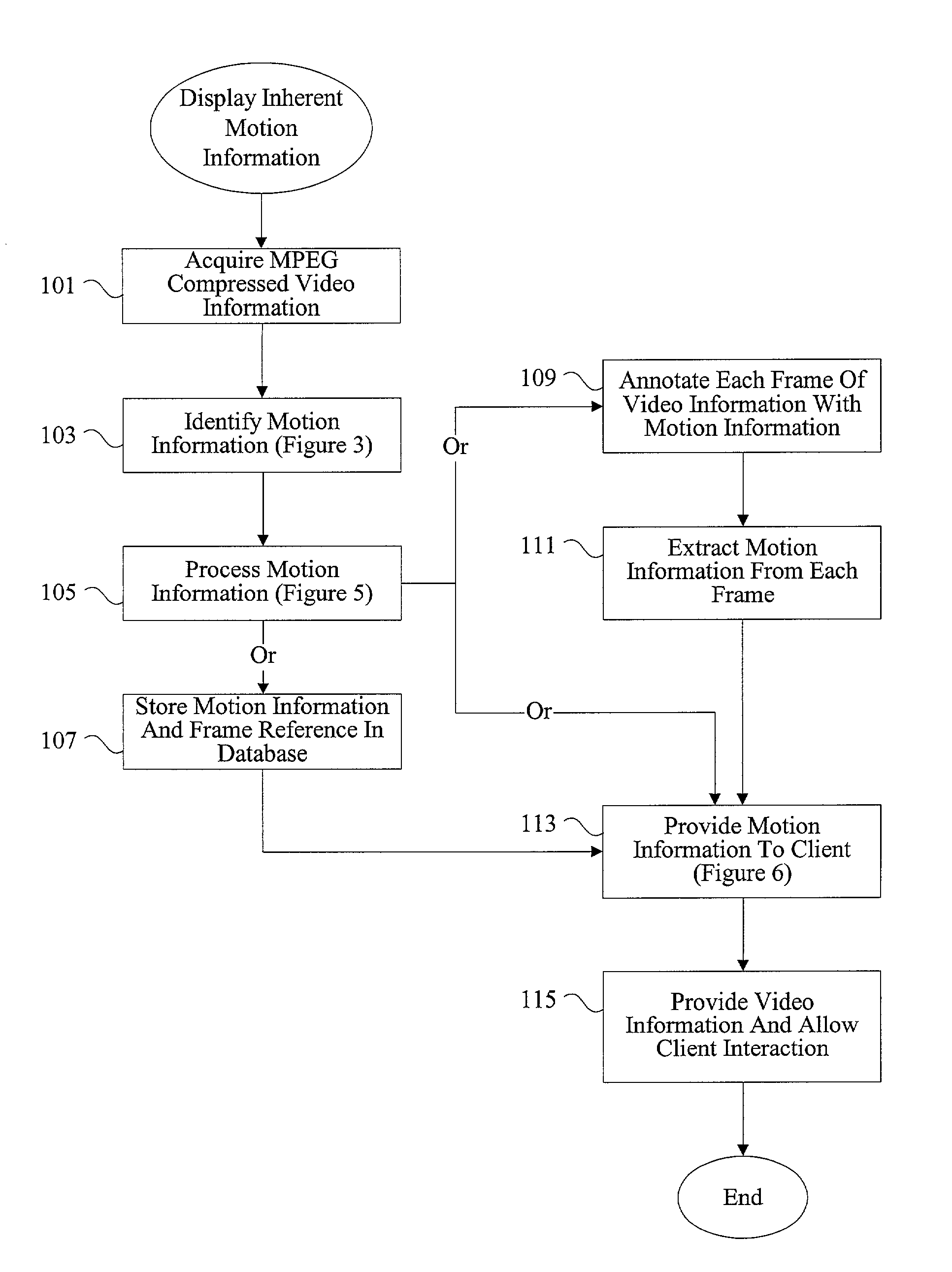Video stream representation and navigation using inherent data
- Summary
- Abstract
- Description
- Claims
- Application Information
AI Technical Summary
Benefits of technology
Problems solved by technology
Method used
Image
Examples
Embodiment Construction
Introduction
[0041]The present invention generally relates to providing a client with supplemental information inherent in a video stream. Supplemental information includes motion, audio, scene cut, and editorial information. Generally, information associated with an MPEG video bit stream that is not the video information itself is referred to as supplemental information. One type of supplemental information that a client may be interested in is motion information. MPEG compression characteristics provide a convenient technique for providing motion information to a client. MPEG video and image compression techniques are described generally in Image and Video Compression Standards Algorithms and Architectures, by Vasudev Bhaskaran and Konstantinos Konstantinides (ISBN: 0792399528), the entirety of which is hereby incorporated by reference for all purposes.
[0042]MPEG digital video compression schemes allow digitized video frames to be represented digitally in an efficient manner. Compr...
PUM
 Login to View More
Login to View More Abstract
Description
Claims
Application Information
 Login to View More
Login to View More - R&D
- Intellectual Property
- Life Sciences
- Materials
- Tech Scout
- Unparalleled Data Quality
- Higher Quality Content
- 60% Fewer Hallucinations
Browse by: Latest US Patents, China's latest patents, Technical Efficacy Thesaurus, Application Domain, Technology Topic, Popular Technical Reports.
© 2025 PatSnap. All rights reserved.Legal|Privacy policy|Modern Slavery Act Transparency Statement|Sitemap|About US| Contact US: help@patsnap.com



